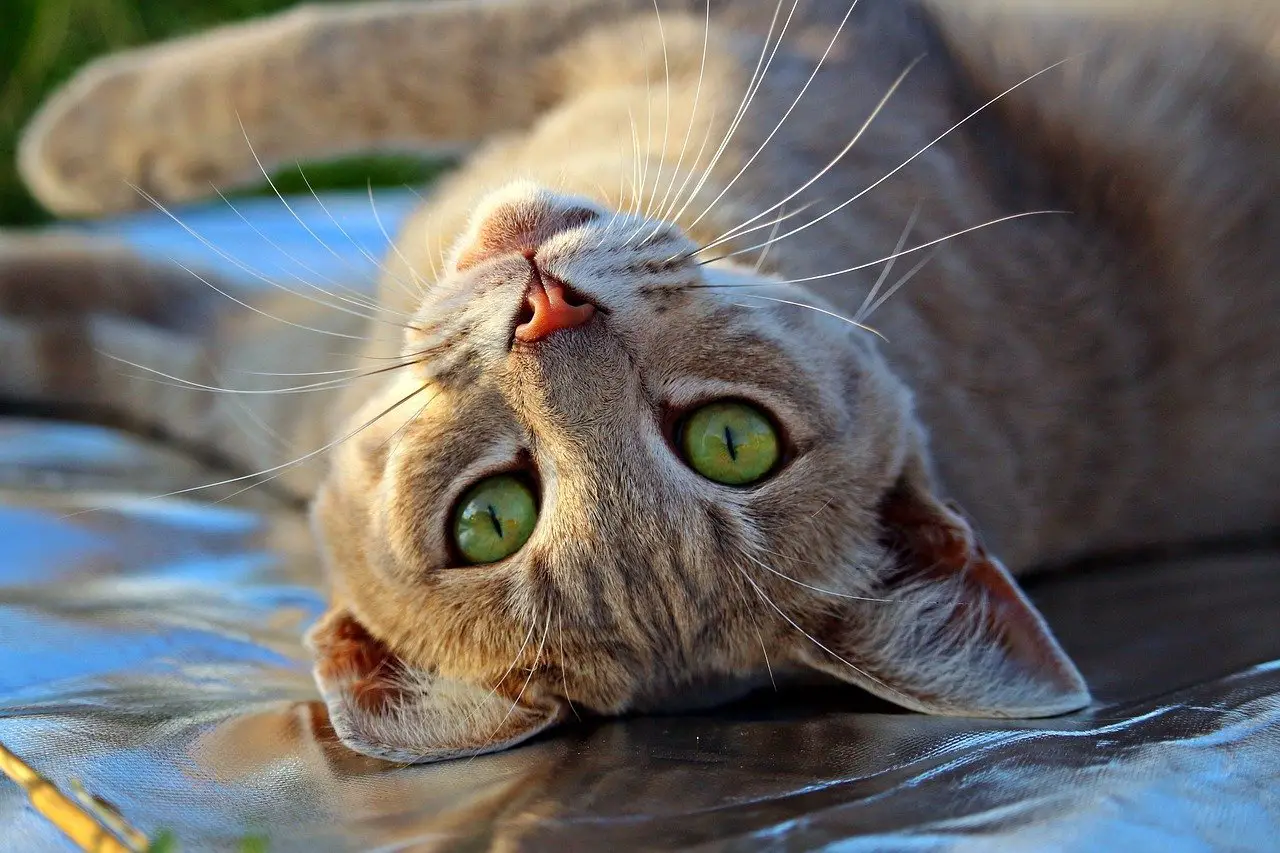Far too many pet owners try to treat their cats like their dogs, even though they understand that these two animals are completely different from one another – especially when it comes to their personalities.
It’s natural for us as humans to want to establish the same kind of “pecking order” that dogs are really comfortable with. We want to be at the top of the pack, leading everyone beneath us, and dogs (instinctually) are looking for the same kind of leadership and structure as well.
Cats, well, are not at all interested in that kind of hierarchy even just a little bit.
How to Show Your Cat You Are the Alpha
If you try and take the same kind of approach to “dominating” your cat you’re going to find yourself in a vortex of sticky situations, with your cat not knowing how to respond to you and potentially even redirecting some of their aggression, fear, and anxiety to the person that they are supposed to love and the person that cares for them as a family member.
At the same time, you definitely can’t afford to be “wishy-washy” with a cat, either.
These felines are very intelligent and will pick up on these vibes sooner than you would have thought possible. All of a sudden they are pushing the boundaries of good behavior (sometimes well outside the envelope) and then you have an entirely different set of less than ideal situations on your hands.
Below we dig a little bit deeper into the ins and outs of how and when you should be establishing dominance over your cats, helping to sort of herd them into a bit of a loose structure that they definitely wouldn’t have joined up on all on their own.
Yes, your dog is going to think you are a little bit crazy and wonder why this furry little terror gets to have so much run of the house when they see your approach. But the beautiful thing about dogs is that they always follow the pack leader, understanding that they have their best interests at heart and they’ll love you all the same.
Let’s dig right in!
Raise Your Own Kittens
Obviously I don’t mean find a way to play with science to actually have your very own personal litter of kittens, but I do mean that you should do everything you can to raise your cats from as young an age as is responsibly possible.
If you are lucky enough (and interested in) breeding your cat and raising kittens from that litter you’ll have an opportunity to make an impression on these young lives that is worth its weight in gold, especially when it comes time to imprint boundaries.
Older kittens can still be taught the same lessons, though it’s going to take a little bit longer than it would have taken if you were raising them right from birth on up.
The overwhelming majority of legitimate kitten breeders are willing and able to sell their kittens at the age of 12 weeks, though shelters are usually willing to offer their kittens a little younger than that. Most shelter kittens can be adopted out at eight weeks, giving you an opportunity to make that imprint a little stronger and a little more solidified if you are interested in adoption.
Kittens start to recognize people as members of their parental structure around 12 weeks of age. As long as you get them around this age you’re going to create a solid bond with a lot of authority in their lives that just wouldn’t have existed if you aren’t as present early on.
It is still important to socialize these kittens with other cats and other pets, too. Introduce them to any other furry little family members you have – cats or dogs alike – to get them comfortable and to see them interact with you as a pack leader as well.
All of this will make a favorable impression.
If you are going to be adopting older cats it’s not a bad idea to try and choose one that has had plenty of socialization with other humans and ideally with other animals, too. This isn’t always possible but is something you should strive for. Socialization and dominance with a cat that has had a lot of life without that structure can be tough, but it’s not impossible.
Understand the Major Differences Between How Cats and Dogs Respond to Dominance
Another big piece of the puzzle (for you, anyway) is to really understand and ingrain in yourself the fact that cats and dogs respond wildly different to dominance and to never confuse these two reactions across species.
Dogs operate with an instinctual understanding of the value of a hunting pack. They know that there’s a pecking order in these kinds of packs, an order established from their ancestors the wolves, and no amount of domestication is going to shake that from their bones.
Cats don’t have those instincts and they don’t have that genetic memory, either.
Each cat is their own Alpha, their own leader of the pack. They are wildly independent, aloof, and oftentimes appear to be completely uninterested with the people or other animals in their lives – and then, in an instant, are super involved in super affectionate only to turn back into a standoffish ball of fur shortly thereafter.
Cats also aren’t used to working together with other cats. They are used to working solo, socializing on their “off hours”, and while they sleep next to one another and protect each other in their nests they aren’t wired to work together with the way that a dog pack is.
Once you understand this you’ll understand immediately why trying to dominate a cat the way you might have a dog (or another person) is going to backfire spectacularly. Your cat might give you a blank stare before they turn tail, stuff that tail high in the sky, and then prance away as though you didn’t even exist.
Just to be clear, there’s no way to win any real dominance through a traditional approach with a furry little family member that has this sort of temperament hardwired into their DNA. Try as you might crack the code you just won’t be able to pull it off.
How to Show Your Cat You Are the Alpha
On the flip side of things, though, you can win a staredown with a cat – something that’s next to impossible to pull off with a dog that is particularly Alpha and particularly dominant.
A quick, direct stare down is usually all that’s needed to encourage good behavior and to establish real boundaries. You’ll notice that your cat will meet your stare for a short while, recognize that you aren’t playing any games, and will eventually relent and allow you that moment of dominance.
This is hugely important, as you’ll want to be aware of the fact that this moment of dominance is exactly that – a moment – and will always be pretty fleeting.
Recognize that this sort of stare down has a lot to do with the territorial behavior of cats. At the moment you are letting them know that they are on your turf – not there’s – and that you are enforcing some real boundaries here.
Who is the boss?
Once the cat backs off and you establish this frame you’ll have won the battle of wills – but only for that moment, usually. Cats are always testing for holes in the wire, so to speak, and looking for a way to stretch their territory back into place.
What you don’t want to do, though, is abuse this “superpower” of dominating cats by using it too often.
You want to be smart and judicious in how you use it for sure. Use it too much and it’ll lose all effectiveness. And then you’re right back to square one with a cat that won’t behave – but now things are worse because they aren’t going to respond to your dominance efforts anymore, either.
Another great tip to enforce the boundaries you want to establish with your cat is to give them food, deliberately placing it in front of them and offering to them directly.
In the dog and human world, this gesture is seen as part and parcel of working together. In the cat world, though, it is seen as something much more important and influential. It’s a sign of kinship, clanship, and family – it means that they are accepted, they are part of the pack, and that they are loved and welcome to stay in that safe space.
At the end of the day, it’s not a bad idea to combine both of these tactics with one another to get the behavior you’re looking for from your cats or kittens.
Use all the tips and tricks we have highlighted above as well as the inside information in this guide to better understand the behavior of your furry little family members and they will be much better behaved because of it.
[su_box title=”Affiliate Disclosure”]This website is supported by its readers. Please assume that all links are affiliate links. If you make a purchase from one of the links we will make a commission from Amazon. Thank you.[/su_box]




